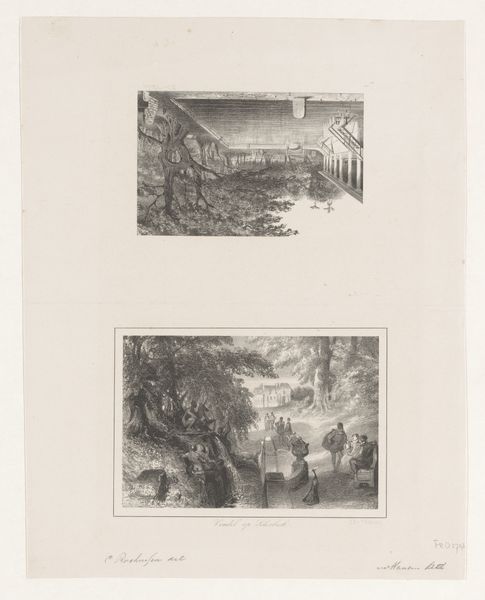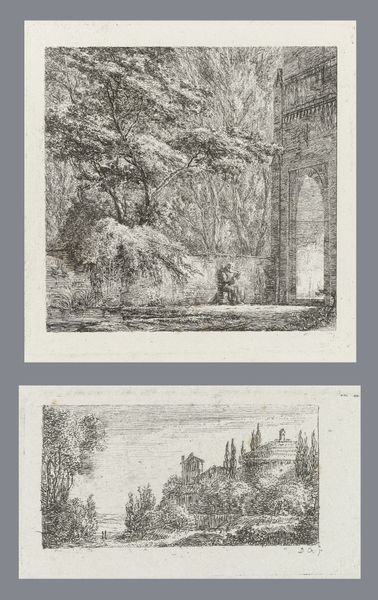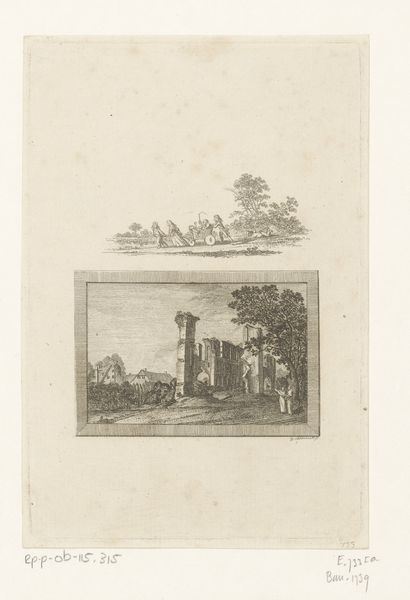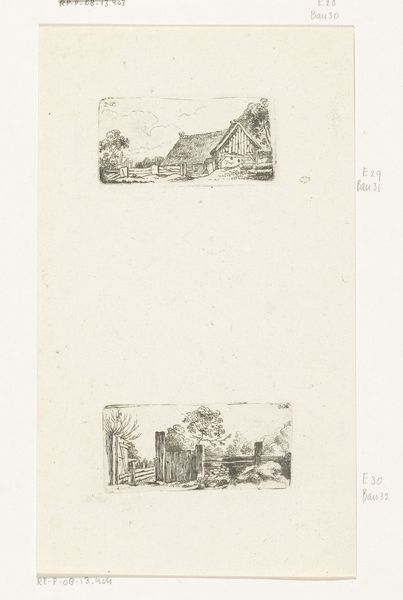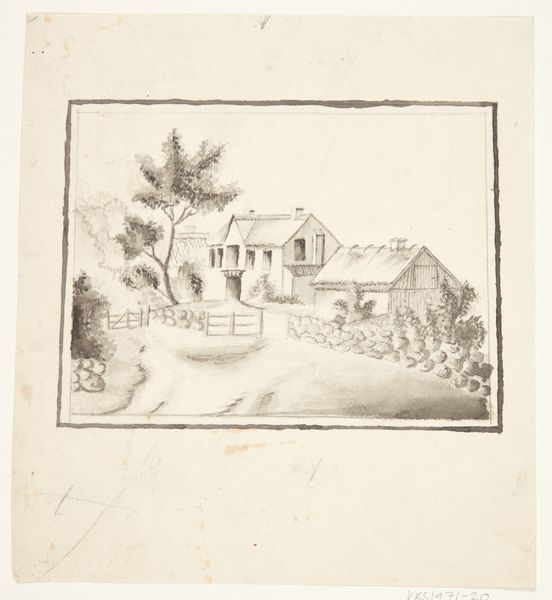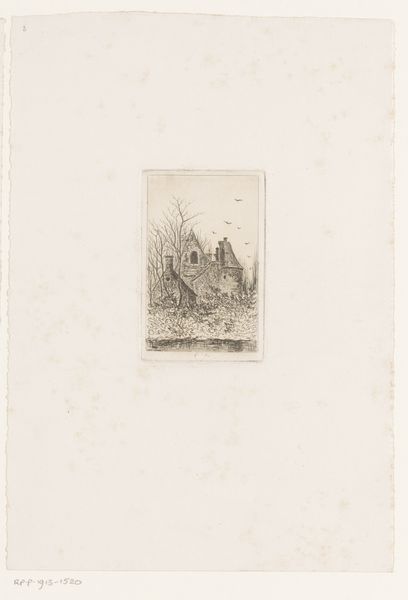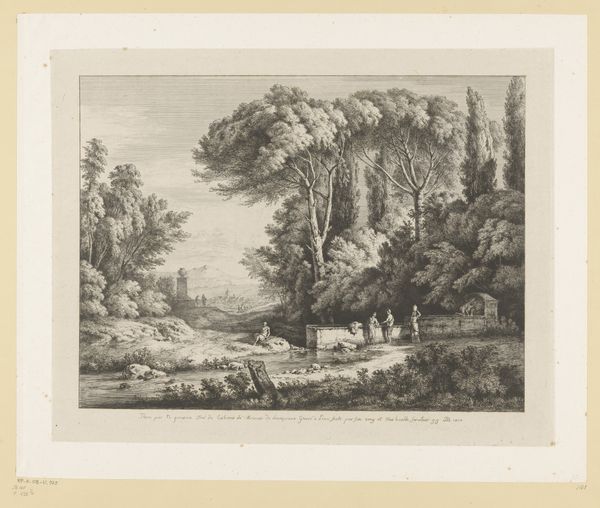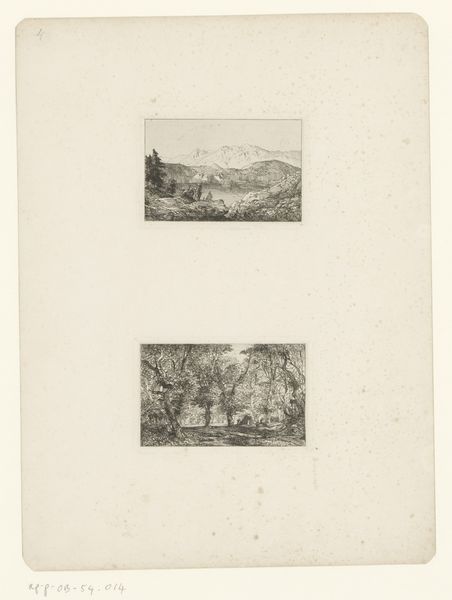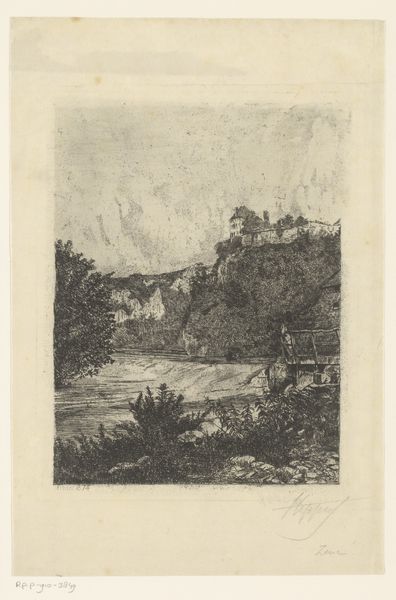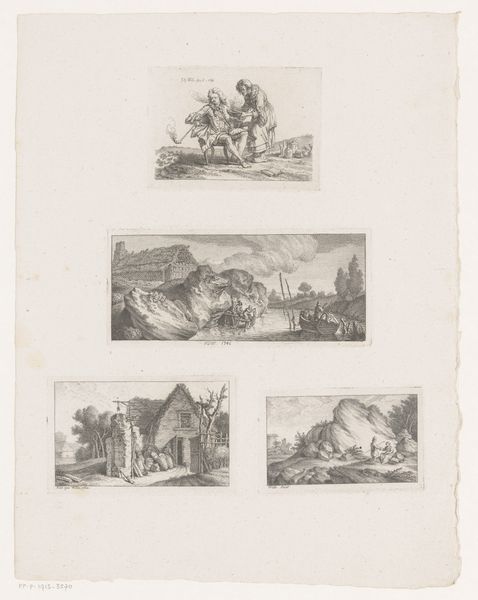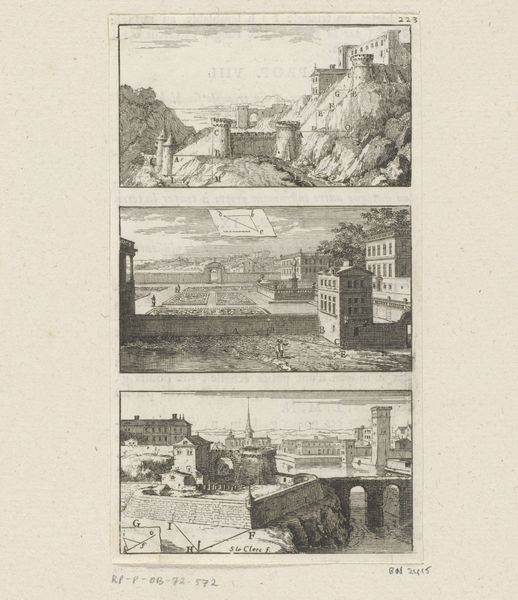
Berglandschap met woningen aan een brug en landschap met bomenrij en tunnel 1816
0:00
0:00
ignatiusjosephusvanregemorter
Rijksmuseum
drawing, print, etching, paper
#
drawing
# print
#
etching
#
landscape
#
paper
#
romanticism
Dimensions: height 92 mm, width 109 mm, height 80 mm, width 50 mm
Copyright: Rijks Museum: Open Domain
Ignatius Josephus Van Regemorter made these landscape etchings sometime in the 19th century. Etching involves coating a metal plate with a waxy, acid-resistant substance, then drawing through it with a sharp needle, exposing the metal. The plate is then immersed in acid, which bites into the exposed lines, creating grooves. Ink is applied to the plate, filling these grooves, and the surface is wiped clean. Finally, paper is pressed against the plate, transferring the ink and creating a print. Look closely, and you can see the quality of line that is characteristic of the process. The varying depths and densities create tonal variation, and the crispness of the lines allow for fine details. The labor-intensive nature of etching meant that it was usually a studio practice, but in this case, Regemorter has used the medium to capture an intimate, natural scene, perhaps working "en plein air." Understanding etching as a process gives us a greater appreciation for the artist’s skill and labor. By considering the materiality and production, we can move beyond traditional art historical categories and appreciate the social and cultural significance of the work.
Comments
No comments
Be the first to comment and join the conversation on the ultimate creative platform.
